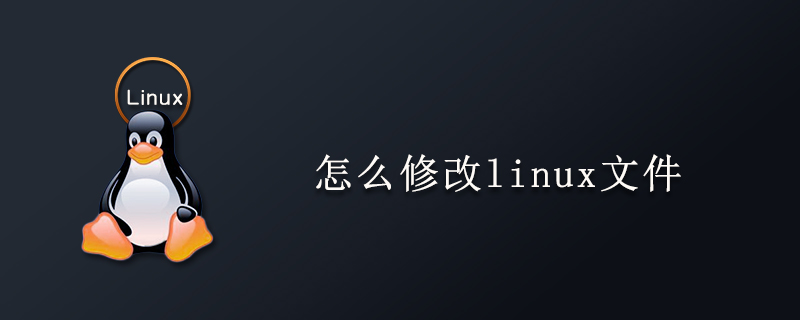Home >Operation and Maintenance >Linux Operation and Maintenance >How to modify linux files
vi has two modes: one is editing and the other is command. We enter the editor from the command: i, o, a. Generally, i is used: because this is the one I am most familiar with. To exit, click the esc key to enter command mode.

We need to delete the current line and the next line of the file. The command is: 2dd. Generally, we use the deletion of a single character: x. We usually enter edit mode to add, modify, and delete. (Recommended learning: linux operation and maintenance)
But when we delete and modify too much content, we use the command line mode to make modifications, which is convenient and fast, and the command line Among them, the four most commonly used commands are x, dd, u, and p:
x:删除当前字符; dd:删除当前行; u:恢复前一步操作; p:复制之前删除的行。
vi is a commonly used editor under the Linux terminal or console. The basic operation method is: vi /path/ File name
For example, vi /etc/saikik means displaying the contents of the /etc/saikik file.
Use the Page Up and Page Down keys on the keyboard to turn pages up and down;
Press the Insert key and you will see "Insert" in the lower left corner of the window. " means that the current state is insert editing, and the content entered from the keyboard will be inserted at the cursor position;
Press the Insert key again, and there will be the word "Replace" in the lower left corner. Indicates that the current state is replacement editing, and the content entered from the keyboard will replace the content at the cursor position.
After editing the content, press the Esc key and enter ":wq", then press Enter to save and exit.
If you do not want to save but exit directly, press the Esc key, enter ":q!", and then press Enter.
"wq" means Write and Quit, that is, save and exit; "q!" means ignore modifications and force exit.
The above is the detailed content of How to modify linux files. For more information, please follow other related articles on the PHP Chinese website!